Please note: As an Amazon Associate I earn from qualifying purchases. I also work with other affiliate partners and may be compensated from the links below. Details here.
Nikon D810: An Extraordinary Full-Frame DSLR Worth Buying in 2025 (Review)
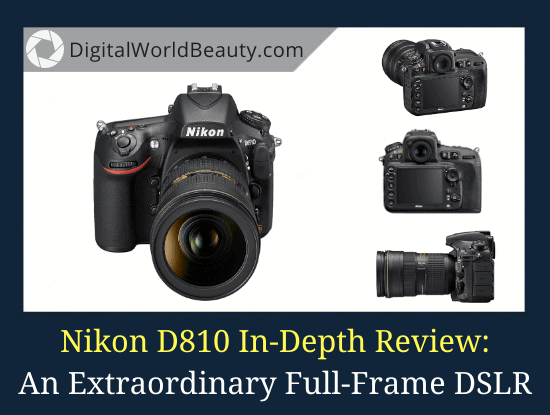
Welcome to my Nikon D810 review! (2025 Update)
You might be wondering:
Is the Nikon D810 still worth buying?
My quick answer: If you’re fairly experienced in photography, this full frame camera sure is worth it. Weddings, portraits, sports, landscape photography – this DSLR can do it all!
As we evaluate the Nikon D810 2025 market position, this camera continues to hold its ground against newer competitors.
In fact, Nikon D810 is still one of the dream cameras on the market right now.
Now…
It’s important to understand that buying this DSLR should be a conscious decision because there ARE cameras out there that will be able to meet 200% of your requirements at a much lower cost.
The thing is that D810 is a full-frame (FX) sensor and upgrading to this level comes with a lot of nuances, most of them of financial nature.
Getting this DSLR is just the first step.
You should also realize that you’ll likely spend as much money on quality lenses as you will on the camera body itself.
That’s why I think that buying this DSLR should be a clear-headed decision that’s backed by years of experience and practice.
This being said, who is the Nikon D810 camera for?
In a nutshell, this full-frame DSLR is designed primarily for those photographers who need uncompromisingly high image quality.
The Nikon D810 image quality remains unmatched in its class, delivering stunning detail and color accuracy.
Specifically:
- landscape photography,
- portrait photography,
- photography for commercial and advertising purposes.
These are the genres where excellent color rendering and the highest detail of the image will be especially useful. Check it out!
Nikon D810 Review 2025 (Summary)
Type: Mid-size SLR | Weight: 980 g | Resolution: 36 MP | Nikon D810 Sensor size: FX (35.9 x 24 mm) | ISO: Auto, 64-12800 | LCD screen: Fixed | Touchscreen: No | Environmentally sealed: Yes (weather and dust resistant)
Reasons to Buy:
- incredible sharpness of photos
- comfortable grip and ergonomics
- video shooting up to 1080 @ 60p
- large buffer when shooting in JPG
- ability to work with 2 memory cards
- high image quality up to ISO 3200-6400
- weather sealed to prevent from dust and moisture
- higher battery life (you can take 1000 images and it’ll still work)
Reasons to Avoid:
- no 4K video
- a bit heavy (980g including batteries)
- no quick switch between AF-S and AF-C
- NOT suitable for beginner photographers
- no U1 and U2 modes as seen in Nikon D7100
- small buffer when shooting in RAW and S-RAW
What to keep in mind:
Consider buying a fast and spacious memory card for D810, it’ll be a lifesaver!
Specifically, get a CF memory card with a recording speed of 120 MB/s and with a memory of at least 64 GB and use it as your primary one.
Whether you’re looking for just the Nikon D810 body or a complete kit with lenses, you can check current pricing and availability below:
Nikon D810 for Beginners? (Honest Opinion)
Is D810 a professional camera?
Yes, it absolutely is. And if you’re just starting your photography journey, this full-frame DSLR is NOT for you.
I never recommend FX body to beginner photographers because, by the time you figure out how a camera works and how to use all the settings, there will be something newer and cooler.
The truth is, the interface of D810 is designed for experienced photographers; so newbies will definitely find it complicated.
I don’t want you to lose money (or interest).
So…
If you are an amateur, I recommend that you go with simpler options that will help you learn and grow as a photographer.
Instead, check out the following entry-level cameras for 2025:
(With my full reviews of each DSLR mentioned.)
These will likely help you get fully interested in photography and are very simple for beginners. In fact, some of them have even Guide mode available.
But, if you feel that you are ready:
- emotionally,
- financially,
- and professionally,
…then by all means go with D810!
It’s definitely one of the best Nikon cameras on the market right now.
While the Nikon D810 price ranges from well over a thousand dollars for just the body, you’ll likely invest $4000-5000 total when you factor in quality lenses.
Nikon D810 Specs: What’s New?
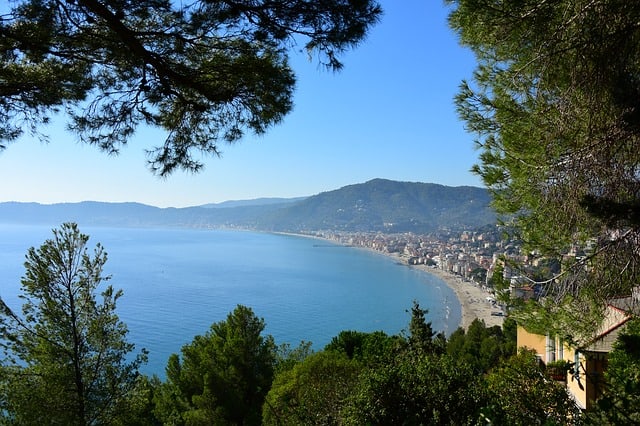
Nikon D810 comes with a 36 MP sensor and is the continuation of the sensational D800 and D800E back in 2012.
The Nikon D810 release date was July 2014, making it a proven performer that has stood the test of time.
It sure is a bit better than the latter ones in every aspect.
Specifically:
- it received a new EXPEED 4 processor, which increased serial shooting to 5 fps;
- has a natural ISO range of 64-12800;
- includes Picture Control 2.0, a new image processing system;
- Full HD video shooting at a rate of 50 fps;
- sRAW shooting mode, which allows you to take small-resolution photos (for publishing them online).
Among other minor additions that make this DSLR great.
For example, the D810 sensor doesn’t have an anti-aliasing filter.
What is that?
It’s a special filter on the sensor, which makes the transition between pixels smoother, and this way improves the quality of color rendering in certain shooting situations.
The engineers also removed the optical low pass filter (OLPF), which further sharpens the images (with a risk of moiré on some periodic textures.)
However, a moiré pattern is more hypothetical because you’re unlikely to encounter this effect in a real-life shooting.
Fun fact:
Initially, an experiment without a filter was first carried out on D800E.
Nikon realized that no one was experiencing any significant issues and the sensor without the filter went to the masses in the form of Nikon D810 (and D7100 too, by the way).
Having no low-pass filter does such a good job that the photos are sharp even with the lenses that aren’t very sharp.
What I like about this camera as well is that the shutter noise is quiet, you practically don’t hear it when shooting.
(If you’re familiar with D7100, then you’ll have an idea of how quiet it is.)
Burst Rate, Autofocus, Video, and ISO
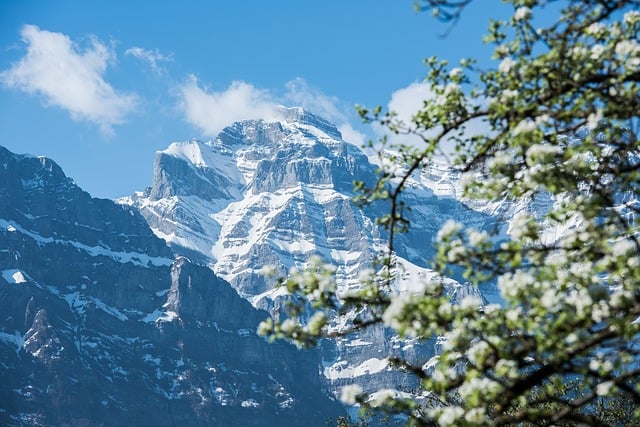
Thanks to the EXPEED 4 processor in this body, the Nikon D810 frames per second capability reaches 5 fps at high resolution (compare it with the 4 fps of the last model), and up to 7 fps at a lower resolution.
The fact is, the frame rate corresponds to the one on D700, so it makes D810 pretty much universal.
The standard frame rate is 8-9 fps in high RAW + JPEG resolution and up to 20 frames in JPEG. It’s pretty good for a camera with such resolution, the image buffer is pretty large.
Now…
Is the Nikon d810 good for sports?
You can shoot pretty much anything at a rate of 5 fps.
Even though it is a bit low for a full-frame body, it’s still enough for shooting wildlife and sports-related events.
As a matter of fact, Nikon D810 is one of our top camera recommendations for sports photography (with proper lenses!)
Here’s a pro tip on how to increase your number of frames per second:
If you’re shooting a fast action type of scene, then just switch your camera to DX mode so that it gives you extra fps (one or two, depending on whether you are using an additional battery pack or not).
What about autofocus?
In terms of the autofocus system, it hasn’t changed.
It’s the same Nikon Multi-CAM 3500FX with 51 focus points and 15 cross-over sensors, which makes autofocus very fast and accurate.
And still there have been improvements in their algorithms. There is now an automatic focusing on a group of points.
There’s a wide range of autofocus possibilities:
- fine-tuning of all points and the possibility of selecting a zone;
- adequate tracking autofocus;
- perfectly working 3D tracking;
- AF illumination.
I mean the face-tracking autofocus is so great that you won’t even want to get off the auto mode. 3D tracking and dynamic area autofocus almost always “hit the target” from the first shot.
In Live View mode, contrast autofocus works – it’s not as fast but it’s just as accurate.
The tracking autofocus definitely improved, and it’s something that will especially appeal to videographers or hybrid shooters.
Speaking of videography.
Is Nikon D810 good for video?
The video capabilities in D810 had also been improved.
This Nikon DSLR is fully adapted for professional video shooting with its Full HD recording at a rate of up to 50p/60p.
A thing called Picture Control “Flat” was realized especially for videographers, which gives them the maximum color correction capabilities for post-processing.
To record audio, you can use external stereo microphones, and during the recording itself, you can actually monitor the sound using headphones.
Last but not least, video recording can be done on a memory card, an external recorder using an HDMI connector, or both.
What about ISO?
The maximum ISO threshold is up to ISO 12800, and in the “Hi 2” mode you can now take photos with an ISO of up to 51200.
With such characteristics, there is no need for high-aperture lenses. The minimum ISO now is not ISO 100, as was seen in D800, but ISO 64 (in the “Lo 1” it’s ISO 32).
Overall, the images at high ISO, let’s say 10 000, look absolutely amazing.
Yes, you’ll see a bit of noise but it’s definitely tolerable.
A Few More Things…
Low light
Its low light performance is pretty great but certainly isn’t one of the best. Most pros would give it a rating of about 3/5 (without flash).
Battery life
The Nikon D810 battery performance is amazing. You can get approximately 1200-1300 shots with 1 full charge. Of course with video, your battery will die faster. Speaking of video…
4K video
I know there’s a 4K mania now and keep in mind that there’s no 4K video. For some, it’s not a huge con though, especially with all the other great features that this DSLR has to offer.
Dynamic range
DR with an available base of 64 makes the Nikon D810 landscape photography capabilities truly exceptional, earning it a place among the top choices for serious landscape photographers.
Shutter life
The Nikon D810 shutter life is rated for approximately 200,000 actuations, making it reliable for professional use over many years.
Best Lenses for Nikon D810
Now…
What are the best Nikon D810 lenses?
Here’s a quick overview of the top-recommended options that perfectly complement this camera’s capabilities.
- 28-300mm f/3.5-5.6 VR – An “all-in-one” lens to shoot pretty much anything.
- 16-35mm f/4G – A great starter wide lens for landscape photography.
- 50mm f/1.4G – If you’re heavily into portraits (smooth AF and amazing bokeh)
- 24-70mm f/2.8 – Brilliant for wedding photography, portraits, and landscapes.
- 105mm f/2.8 VR – For macro photographers (or 200 mm f/4 if you’re a pro)
Also, let us know in the comments what your favorite lens is!
Frequently Asked Questions
Is Nikon D810 a professional camera?
This camera is classified as a pro-grade full-frame DSLR.
It’s more on the high-end side of the spectrum, which means it’s quite pricey and has advanced features fit for expert photographers.
As I’ve mentioned earlier, it’s the dream camera of most professional photographers, and for all the right reasons. It allows you to explore the craft endlessly and from a more artistic (yet still technical) perspective.
Nikon D750 or D810?
Since these two products perform so well in their own respects, a lot of people have been comparing them time and time again.
Now, is there really that much of a difference between the Nikon D750 and the D810?
Honestly…
When it comes to photo quality, you can barely see any difference, unless you are very meticulous. This also goes out to the print quality of the images taken from both cameras. Both can pretty much hold up being printed on a 2m-wide canvas without issues.
The difference mainly comes with sizing and weight. Nikon D810 is a lot bulkier and heavier than D750. This is one of the reasons why a lot of professional photographers choose the latter over the dreamy D810.
Another noticeable difference is that D810 is more of a quiet camera. Whereas D750 tends to make noise even if it’s put into quiet mode.
And one of the most popular tie-breaker features between these two gears is the WiFi connectivity. While D750 has built-in WiFi, D810 has none.
The bottom line is:
It’s still your call. No matter which you choose between the two, know that they both perform so well.
Nikon D810 or D810A?
With the release of the D810A model just a few months short of a year (the newer device was released on Feb. 2015), many of you might be wondering what differences are there between this and the D810.
While there’s not that much to see appearance-wise, there are other features/parts upgraded on the newer model.
First of all, the newer unit is 100g lighter than its predecessor. But with this small amount of change, it often goes unnoticed. Both still have the same button layouts and dials though.
Another notable difference is that the D81oA now has an Anti-Aliasing (AA) filter. This helps avoid moire that appears in devices without the said feature.
Aside from these, both models basically have similar/same features. They also sport the same exact sensor, so if you are worried about the photo quality, then you can expect the same results.
Is Nikon D810 good for wildlife photography?
Nikon D810 is considered a golden gear by most photographers. The reason for this is that it works well regardless of the genre you are into. It delivers great results for portrait, landscape, and even wildlife photography.
One of the reasons why this has become a popular choice for wildlife shoots is that it has an impressively quiet shutter sound.
Plus, it even comes with a “Quiet Mode” (which I think isn’t really that necessary anymore, TBH). This is very helpful if you are photographing animals in the wild that are sound-sensitive.
Another good reason why this camera works so well for wildlife is that it has great cropping capabilities.
There are times when your subject is just too far away for it to show clearly in the shot. When this happens, you might want to crop the photo to zoom in on the subject. And D810 lets you do this without ruining image quality.
Does D810 have a good price-quality ratio?
Nikon D810 is a high-end gear, so it comes as no surprise that it has a premium price tag. But is it really worth spending that much?
Honestly, it depends on you.
When it comes to the price-quality ratio, I still think D750 is better. It’s a cheaper model with almost the same features and quality.
But if money is not an issue, D810 is definitely worth its value.
Nikon D810 in 2025: Still Worth Buying?

Is Nikon D810 worth buying?
Many photographers ask ‘is Nikon D810 still a good camera?’ and the answer is a resounding yes.
Despite being released nearly a decade ago, its image quality and build quality continue to compete with modern cameras.
Without a doubt, the interface of D810 is more directed at experienced photographers, so the beginners will simply find it challenging.
However, if you’re pretty experienced in photography, you’ll definitely enjoy camera’s:
- fast and accurate autofocus,
- great image detail at high ISO levels, and,
- an amazing sRAW mode function.
This DSLR is a great tool for commercial photography, portraits, landscapes, wedding photography, and so forth.
Whatever you decide to shoot, Nikon D810 is still a dream camera (hence the price tag).
And like I said earlier before you decide to buy this DSLR, think if you’re ready to spend so much money on it (plus quality lenses).
Now…
If you’re on a tighter budget, you can always go with cheaper, yet great, alternatives. Like Nikon D750, for example.
If currently, you’re a proud owner of the D800, then I don’t think it makes sense to upgrade to D810, even given the new additions.
But if you have an old camera like D700 and want to upgrade to D810, then it will be a huge step forward for you.
Now…
I’d like to hear from YOU:
- What’s your skill level in photography?
- What camera do you own right now?
- What are your thoughts on Nikon D810 reviews?
And more importantly…
In your opinion, is the Nikon D810 worth buying this year?
Any comments, suggestions and/or recommendations are always welcome in the comments!
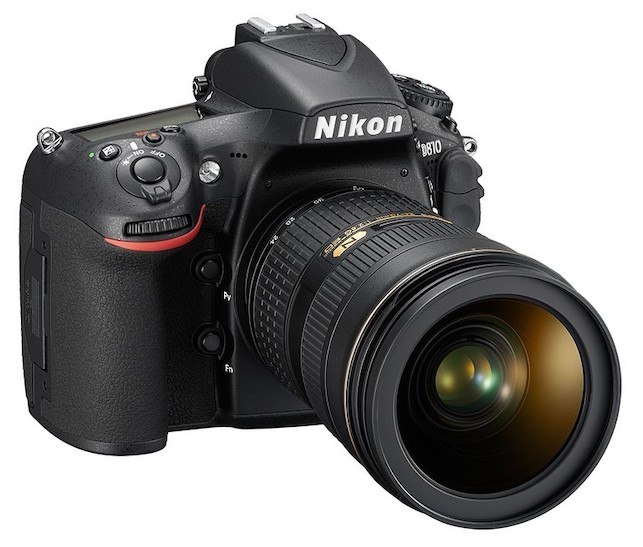
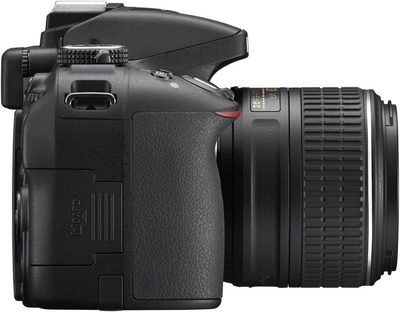
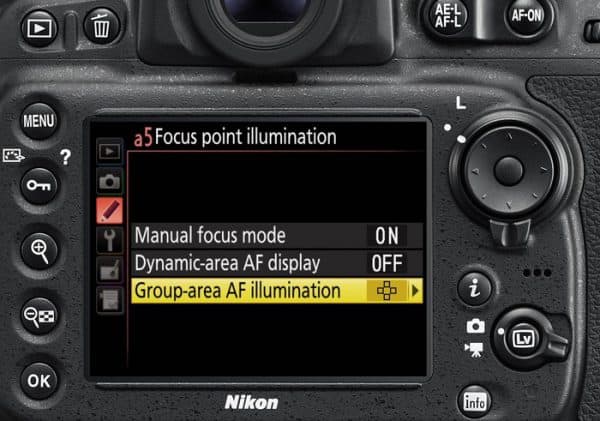
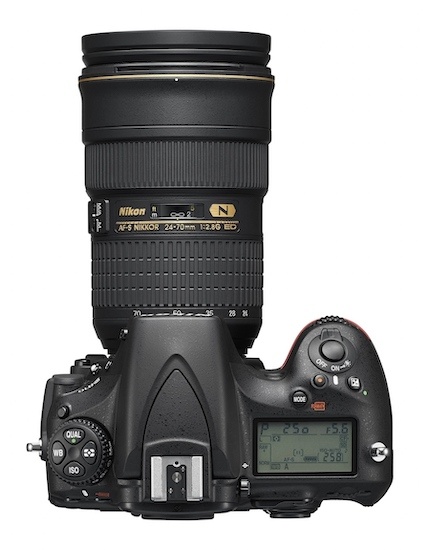
Not so long ago I became a happy owner of this DSLR.
I appreciate you mentioning about the memory card by the way. I decided to go with Transcend 128GB SDXC Class 10 UHS-1 Flash Memory Card for reasons of its universality (plugging it in to MacBook and no adapters needed). The speed of the memory card is awesome, you can watch recorded time-lapse in RAW mode 🙂
I also took this camera for video-shooting purposes. VERY satisfied with ISO: no noise at high ISO and shooting at ISO 64 is useful on a bright, sunny day (if there are no filters involved that is).
I can also confirm that focusing is fast and accurate. Before I had D90 with 50mm lens, it heavily back-focused but D810 pretty much hits the bull’s eye.
In my experience, the battery life was enough for approximately 1300+ shots with viewing on the screen. (Of course with the video the battery died faster).
Just wanted to thank you for your honest Nikon D810 review! I swear there’s no limit to my joy.
Wow, Juan, thank you so much for your kind comment and your mini-review of D810. I am sure your experience with it will help other website readers, looking for a quality mid-size SLR camera to step up their photography game.
Seriously, I am so happy that you benefited from our review and listened to our recommendations (in this case, with the memory card). A lot of people forget about details when buying their camera; well, the photographers writing their reviews also sometimes forget to mention little things that would be helpful to those who are camera shopping.
Let us know if you have any questions and/or concerns, my team and I always check all the comments 🙂 Happy shooting!
Your review on Nikon D810 was very informative. That is a pretty steep price for some to pay, but buying a full-frame camera like this sure is worth it.
One thing that concerns me is whether it’s going to be difficult to edit photos made with D810. After all, those must be pretty heavy. Bought my Mac in 2014, will it handle them?
P.S. Really love your website! The flow is so nice.
Yes, as far as I know, you can totally edit frames with MacBooks that were bought even in 2011. (I asked a couple of photographers to make sure and they confirmed).
Yeah, what can I say… No dream product is cheap!
It’s warm comments like yours inspire me to give out awesome content on digital technology! Thank you 🙂
Thanks for very well rounded article on D810 with your honest opinions, instead pouring all the numbers. I’m an intermediate (hobbits) photographer, been taking pictures with DSLR since 6 years now. I currently own a D7000, and want to upgrade to a an FX camera, as I want to take photography professionally as well in the future. I have see price of D810 to be around 2K (Refurbished), I also need to buy the lenses for the FX camera. What wold be your suggestion for me? D810 or D750 or anything else?
Thanks in advance,
Ravi
Hi Ravi,
I try to present info in the most interesting and useful way possible, so I am really happy to hear you enjoyed this camera review. Thank you 🙂
Good to know you had a lot of experience with your DSLR before upgrading to Nikon D810. (Because it certainly isn’t for beginner photographers).
Remember this:
This camera’s high resolution will expose weaknesses if you purchase cheap, low-quality lenses and that’s why it’s always better to buy a used/refurbished body + quality glass vs. new body with low quality lenses.
In terms of D750 vs. D810.
Unfortunately I haven’t had the time to write a full review on D750 but without a doubt D810 is a better camera in many ways. If you want a smaller (in size) FX camera and a cheaper, then you can opt for D750.
Now, to answer your main question.
I wish I had more info about your situation (like what specific genre you’re into and what your budget is).
I am not gonna just list you expensive glasses just because, so I will be honest here and will name the ones with a good price/quality ratio.
So…
And you’re good to go!
Basically, you can get 2 awesome lenses for less than $1500, and I am certain that you’ll never feel like you’re “missing something”.
I hope this helps, Ravi! Feel free to ask if you have any further questions.
P.S. If you end up getting this camera and lenses, I’d love to hear your feedback!
It’s good to know for me if my advice was useful and will help other website readers make the right decision too 🙂
EDIT: Thanks to your comment I finally published my full review on Nikon D750.
I hope you enjoy the read and thank you for stopping by!
Hi Zarina
Thank you for your review on d810. May I ask your advice?
Currently, I use d7200 and I have six lens which are nikon 18-140mm dx, nikon 35mm 1.8 dx, nikon 50mm 1.8g, tokina 11 – 20mm f2.8 dx , tokina 100mm macro f2.8, and nikon 70 – 300mm afs vr.
Most of my object is event, landscape, portrait, macro, and product.
Now, I’m confused how to spend USD 1400 for new gear. I am thinking of the list below:
1. D810 used. I will use it for portraits, product, food, landscape and event. I will not sell my d7200 because I will use it more for travelling, sports, and nature. Also, use both of them together in an event, so no need for me to change the lens frequently.
However, the cons is, to get max quality of d810, I have also to buy decent fx lens since now I only have 3 fx lens.
2. New tamron 70-200 mm g2. I want to use it for potrait, sport indoor, event indoor. I am not sure that I will use it very often. I want to buy it mainly due to I want to have 70 – 200mm 2.8 .
3. sigma 85mm 1.4 art. It is only USD 1,000 now. I will only use it for potrait I think.
Basically, the list above only about time priority, which gear that I should buy it first, because I think that I want to have it all in the future.
Now, I’m only enthusiast photographer. But, I’m starting to received order for event, potrait or product photography in the weekend.
So, considering the gear that I have now, what will you do?
1. Buy used d810 for product and portrait photography (using current lens) then buy new lens next year. By the way, I am not considering d750, because the new price is same with d810 used and the d750 used price is only USD 350 lower than d810 used price.
2. Buy sigma 85mm 1.4 art for portrait.
3. Buy tamron 70 – 200mm f2.8 g2.
4. Saving more to buy D850 or z6.
Many thanks in advance for your advice. Sorry for too many request and bad english
Regards
Zakky
Hi Zakky,
From your listed choices I’d probably go with either the Tamron 70-200mm f/2.8 or the Sigma 85mm f/1.4. The 70-200 lens is more versatile and great for portraits, the 85 is a fantastic lens, but more limiting.
Now… Most of your lens collection are DX lenses, does you no good to buy a full-frame body if you have no lenses to use on it.
What would the D810 or D850 do for you that your D7200 isn’t capable of anyway? Not much, especially without good lenses to use on it.
So, perhaps save up more for a good camera + lens combo?
Hi Zarina
Thank you for your valuable input. Agree with you. 2nd body can wait. I will collect more good lens for FF from wide to tele, while waiting for the price of D810 and D850 going down further.
Keep up the good work. Success for your websites!!
Regards
Zakky
Hi Zakky,
I’m glad to be of help. Hopefully, I’ll be able to hire more photographers/writers this year and we all collectively will be able to give out more valuable content on photography for you and other blog readers.
Thanks so much for your support, I appreciate it!
I am amateur photographer but have an opportunity to purchase a d810 (8700 shutter clicks) and a brand new in box MB-D12 for $1500. A patient of mine had all this equipment but is now disabled and trying to get rid of it. I was trying to help him out but really prob dont need that much of a camera. Is this a good deal? he has all boxes and paperwork.
Hi CG,
As you in my actual review, my honest advice was that this specific DSLR might be super challenging for beginners.
But if you have high hopes and will continue to explore the world of photography, then for THAT price I’d definitely get the gear. I just don’t want you to miss out on this deal.
Worst case scenario, you can always sell for a higher price and buy an “easier” entry-level camera.
I mean the best gear you can find this year for around $1500 is Nikon D750 only (and D810 is definitely better than D750 in many ways).
Because you’re an amateur photographer, if you DO decide to buy this gear, I highly recommend you get an experienced photographer to teach you all the nuts and bolts of the camera and photography overall.
My recommended courses:
Both are great courses with highly reputable instructors and lifetime access to all lessons.
In my opinion this way you’ll get comfortable with your gear and perhaps accelerate you from beginner photography level to more advanced.
I hope this helps!
Hi Zarina –
Thanks for the information on the Nikon D810, lots of good information. I am a hobbist photographer (been taking photos for 20+ years) and am currently using a Nikon D3300. I want to upgrade and have done quite a bit of research on the D810. Mostly I photograph nature and do quite a bit of macro photos. Since I am retired (and living on my retirement) I need to be cautious of expenses.
My question is; I have found a used D810 for $900, I’ve been told it has a “high shutter count” – haven’t seen it yet – but what would be your advise?? Appreciate any thoughts.
Hi Linda,
Apologies for the late response. Usually I get back to comments a lot quicker but I’ve been extremely busy the last couple months and barely had time to deal with my website business.
I hope it’s not too late to respond to your question though!
As a rule, it’s very important to check the shutter count when buying used gear. (Shutter count is basically the amount of photographs that have been taken since it was new.)
And the higher is the shutter count, the lower is the price.
Now…
If a camera is less than 5 years old, then say 30,000-50,000 shots would be considered a normal amount. If the D810 that you were looking into has over 100K shutter count, then it’s probably best not to buy it.
If you’re in doubts and don’t end up buying D810, I encourage you to look at a great alternative, the Nikon D750 (here’s my full review).
A lot of photographers love it and it happens to be one of my most recommended full-frame DSLRs right now.
As of this year, the camera body costs a lot less than $1500 on Amazon, but for Black Friday or holiday deals you might find an even better deal.
I hope this helps Linda and let me know if you have any further questions!
– Zarina
Thank you very much Zarina. This is quite helpful. I did not end up purchasing the D810, the store that was selling it was very vague about it’s history. I’ll definitely keep the D750 in mind while continuing to do my research.
Thanks again, take care,
Linda
Glad to help, Linda!
If the store was vague, then it’s probably best you stayed away from that DSLR. I would love to hear what you ended up buying in the end and your experience with a new camera 🙂
Happy photographing!
I bought my D810 in 2016. I still love it and it’s in mint condition. I use it with Tamron F2.8 zooms. The image quality is stellar and the dynamic range is still one of the best out there.
Thank you for your input, Scott! Getting comments like this helps website readers realize the camera’s outstanding features and ultimately help them make a decision. I wonder what’s your main photography genre (that you use your D810 for)?
I have had a D810 since 2015 for landscapes and a D500 for wildlife.
For a couple of years now I have run a couple of Fuji cameras alongside these as they are lighter and more versatile in my opinion for street and urban photography. They also handle people very well. That said I still love the feel and image quality of the two larger Nikons which in my opinion give better results for nature and landscape photography.
I am indeed fortunate that I can run these two excellent systems side by side and have no intention to get rid of or upgrade the Nikon. Thanks for your interesting review for 2020.
Thanks a lot for sharing your thoughts, James! I LOVE hearing from my website readers/channels viewers. And when you share your experience like that it helps others as well, to ultimately make the best buying decision according to their specific needs. Thank you!
I just bought a used D810 on eBay…..excellent plus condition with about 50k clicks. It’s trending at about $1100 – $1200 but if you’re quick you can snag a good one for a couple hundred or more less. If you do this, be sure you’re getting a Nikon US version of the camera as there is a LOT of gray market stuff out there (yeah, I’m talking about you, KEH). Just getting my hands on the camera and immediately impressed…..my first full frame SLR since my Contax 157! Can’t wait to get into Yellowstone with it (a short drive but not doable now as the park is closed for “social distancing”…..which has my full support but social distancing is pretty easy in Yellowstone).
Hi Mike, thanks for sharing your tip with the DWB community and congrats on your purchase! Would love to hear from you again about your experience with this DSLR 🙂
My current camera is a Nikon D5200 that I have been using for the past 5 yrs. I was looking at what would be my dream camera–D810 which I just purchased used. I love all aspects of photography….portrait, landscape, sports and wildlife. The D810 gives me the ability to tackle all of these with it’s setting and features. I can’t wait for it to arrive to play with my new Sigma 150-600mm Type C lens. This article just added the icing on the cake that my research was on point. Thank you!
Very glad to hear you found this review useful, Jevette! I’m sure you’ll love the DSLR. Thanks for your feedback, enjoy your new gear and would love to hear back from you in a few months with thoughts and experience with your Nikon D810 + Sigma 150-600mm lens!
I love my D810 for wildlife photography. I am an enthusiast and buy all my lenses used. My favorite lens is the Nikon 70-200 f2.8 vrii g which is very versatile. For extra reach I use the tc-20iii, which seamlessly autofocuses with this lens. I shoot these handheld. I am also trying to perfect my tripod technique with the manual focus Nikon 500mm f4P and 400mm f2.8 ED with or without a modified tc-16A which provides limited autofocus. Thanks for this great article!
I love getting comments like these. Appreciate you stopping by and sharing your tips and experience, Landis!
For the reader who wants to replace his D7000, I thought about upgrading to a D500, but instead turned this camera into a great manual focus specialist by replacing the focusing screen with a still available $30 split prism.
Thanks for sharing your experience, Landis!
I have both a D810 and Z6. I have dedicated lenses for both sets. There are many things the Z series cannot do when compared to the D810. The reverse is also true. So for the time being I’m keeping both!
Hi Keith, thank you for sharing your experience! I’m curious, what’s your main shooting genre with either of those gears?
Hello, lot of good information here!
I’ve been shooting for more than 20 years, mostly landscapes, started with 35mm, and went all the way through 6×6 and 4×5 (still own all these systems). From 2006 I started shooting digital (with a D200) but never considered it my main system as film always seemed to give me a better representation of how I felt about each location.
In the last 8 years, after my daughter was born I exchanged the D200 for a D600 (was happy to have all my prime lenses back to their original focal length) and have been shooting mostly “family stuff” with a 85mm 1.8, a 35mm 1.4 (Sigma Art) and a 24mm 2.8.
Now, since my daughter also has an interest in photography, I think it’s the time to go back to landscape photography again and I’m considering replacing my D600 with a D810.
Actually I started by considering the D750 because the D810s pixel count seemed to be too much for what I need and another of my current interests is taking pictures of our dog which is a bit challenging for the D600 AF and the D750 sounded like the logical upgrade (within my budget).
But there are some details I miss from my old F100 film camera that I miss in the D600 that the D750 also does not address, like the ports for a wired remote or the studio flash and something I don’t see mentioned in any review, but looking at pictures of both cameras the viewfinder of the D810 seems to be a bit roomier than the one of the D750 and I always miss the F100 viewfinder when using the D600 or the D200 before.
My only doubt now is if the “less performant AF” of the D810 compared do the D750 will be something I’ll notice, but since I don’t really “shoot action in the darkness” it seems that all the other points justify sticking with the D810.
Hi Rui, thank you so much for sharing such a wonderful feedback and experience! It’ll help the readers even further when making an educated buying decision 🙂
Great article! I just purchased D810 body for $1500 new! After having purchased an D7200 display model for $1100 w 344 shutter actuations. Have been using D90 for 10 yrs. Need more FX lenses. I noticed considerably more/better dynamic range in the D7200 shots than the D90. Now my mind thinks that that great sensor in the D810 made by Sony is gonna give me EVEN MORE DYNAMIC RANGE!
Congrats on the purchase, John, this is amazing!!! The D810 is simply amazing.
I bought a D810, if I could remember correctly, in 2016. I am an amateur photographer, so haven’t used it much. But even after 7 years, it still is an awesome camera and still very few other cameras can beat its performance. The photos are exceptionally good. However, it is quite heavy and I frequently get back problems carrying the camera and may be another lens and a travel tripod in my camera bag. Since the camera is a full frame, the lenses are also quite heavy. But I believe buying this camera is one of the best purchasing decisions I’ve made in my life.
Hi Neranjana,
Thank you for sharing your feedback!
I agree on the weight and lenses, if you notice I warn people to be aware that when buying D810, it’s not just buying the body, but also lenses, which will be a significant investment.
And still… this DSLR is beautiful, that’s why I highly recommend it here!